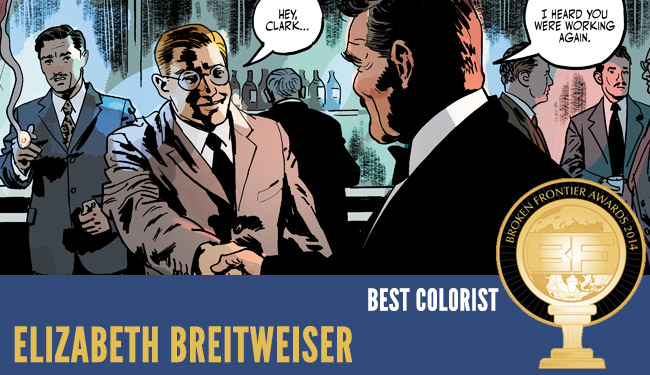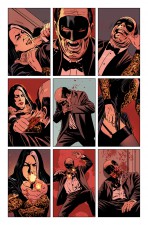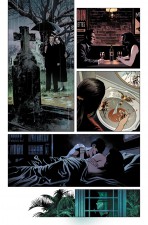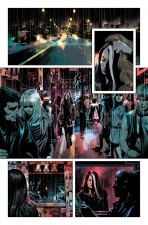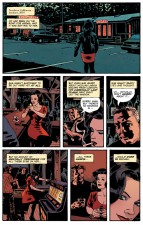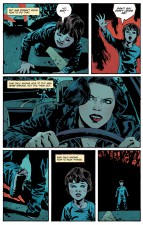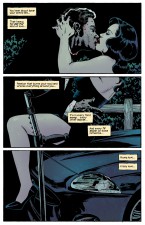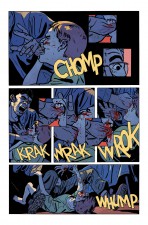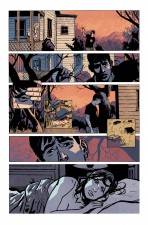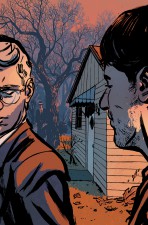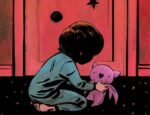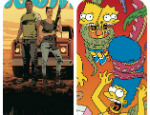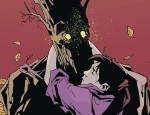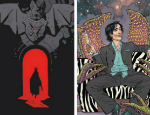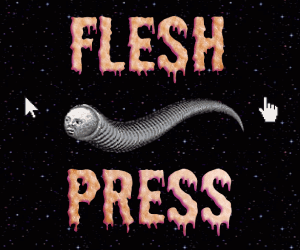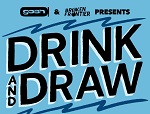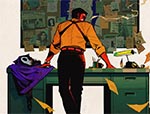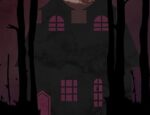The contribution made to comics by their color artists has never been more important or appreciated, and her work on four high-profile Image books has made Elizabeth Breitweiser the first winner of the BF Award for Best Colorist.
It might have taken a while, but the Broken Frontier Awards are happy to recognize the contribution made to some of our favorite books by their colorists, whose work is being pushed into the foreground by the avalanche of high-profile creator-owned projects and the opportunity to appreciate it in dazzling digital quality.
And, for our inaugural award, we’re delighted to announce that Broken Frontier’s Best Colorist of 2014 is Elizabeth Breitweiser.
Like most color artists, Breitweiser has a monthly workload that would make the hairs on your pint stand on end. However, the books that grabbed the attention this year were her high-profile collaborations for Image Comics: Fatale and The Fade Out, with Ed Brubaker and Sean Phillips; Velvet, with Brubaker and Steve Epting; and Outcast, with Robert Kirkman and Paul Azaceta.
Working in the genres of horror, noir and espionage, where characters operate – figuratively and literally – in the shadows, creates its own challenges. However, Breitweiser brings subtlety and a mastery of tone to the work, highlighting the degree to which a colorist – in a similar way to a director of photography in the cinema – can affect the whole process of storytelling.
Three pages from Velvet
Interestingly, Breitweiser didn’t grow up as a comics fan. She only entered the industry (from a career as an art teacher and fine artist) after meeting her husband, artist Mitch Breitweiser. However, her professional grasp of color theory, anatomy, design and composition soon got her noticed, leading to a series of high-profile gigs and a Harvey Award nomination.
The opening pages of Fatale #23 – the penultimate issue of that highly acclaimed horror title – demonstrate what a skilled colorist brings to a comic. As hapless protagonist Nicolas Lash yields to Jo’s influence, becoming “Lost in her fire”, the tone of the panels shifts from cold nocturnal blue to fiery red, and that’s just a prelude to the hallucinatory cosmic extravagance to come.
Three pages from Fatale
In Brubaker and Phillips’ follow-up book, The Fade Out, coloring again plays a key role, as you’d expect in a book about the world of film, which director John Boorman called “the process of turning money into light and light back into money again.” Breitweiser establishes the hazardous noirish world of post-war Hollywood with unsettling greens and lunar blues, introducing the accents of red that rarely bring good news…
With its backdrop of Cold War betrayal and uncertainty, Velvet is another book that uses subtle highlighting to guide us through a twilight world, with bold palette changes highlighting flashbacks into the complex back story.
Meanwhile, Outcast, a more overtly mainstream horror book than Fatale, strikes a delicate balance between the humdrum everyday nature of its setting and the sudden physical and spiritual violence that erupts from its story of childhood demonic possession.
Three pages from Outcast
And if you thought coloring was just a case of cracking out the crayons and seeing what looks nice, this quote from an interview with the AV Club (prior to the launch of The Fade Out) indicates the depth of Breitweiser’s research and analysis:
The Atomic Age was an innovative and optimistic time in U.S. history. It is fascinating to see how the color schemes reflected the mood of the post-war recovery. As the country’s mindset shifted away from fear of war, so did the use of restrained utilitarian color combinations.
Three major color trends emerged: pastel (pale pinks, yellows and blues, minty greens and turquoise), modern (clean, vibrant, contrasting combinations of white, black, and bold electric primary color) and Scandinavian (minimalistic and sophisticated soothing tones of nature often accented with a pop of color like tomato red or lovely chartreuse).
And of course, all of this saddled up with glitzy golden age Hollywood glamour. Don’t even get me started on the makeup trends!
In a medium defined by its visual stylistic possibilities, the award-winning contributions of Elizabeth Breitweiser show what a skilled colorist can bring to the narrative experience.
(Here, it feels appropriate to pay our respects to Breitweiser’s long-time ‘flatter’, Eduardo Navarro Lopez, who passed away in November, at the tragically young age of 36. In her tribute to him, Breitweiser wrote of their seven-year collaboration:
Edo was my right hand man, my cheerleader, my one constant. So dedicated, so trustworthy, so incredibly skilled and intuitive in his contributions. He was a complete joy to work alongside and an exemplary example of a human being.
If you are a fan of any of these books, then you can thank Eduardo Navarro Lopez for helping them get on the shelves and into your hands.
We offer our condolences to Eduardo’s family, friends and colleagues.)





